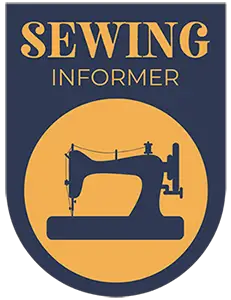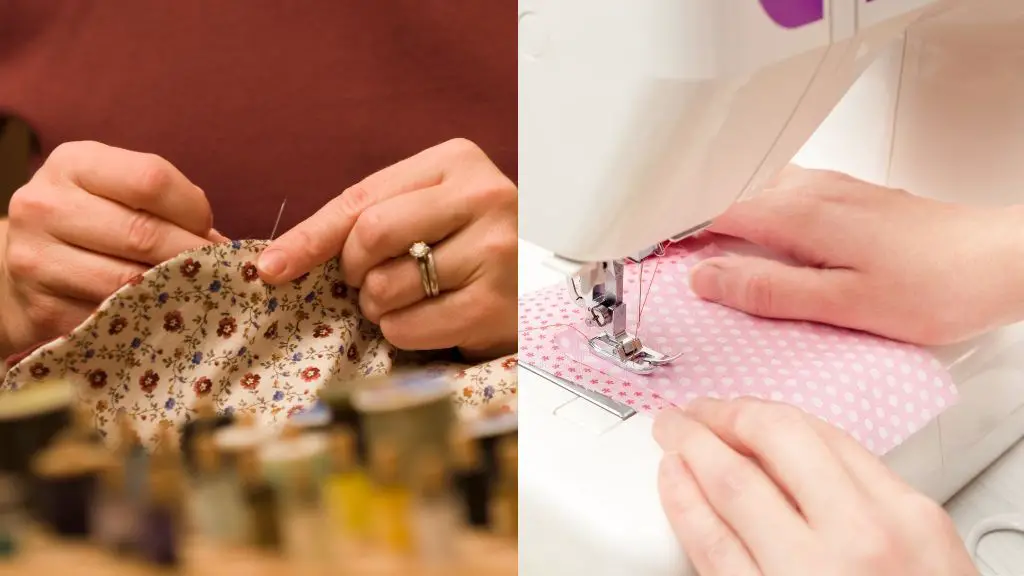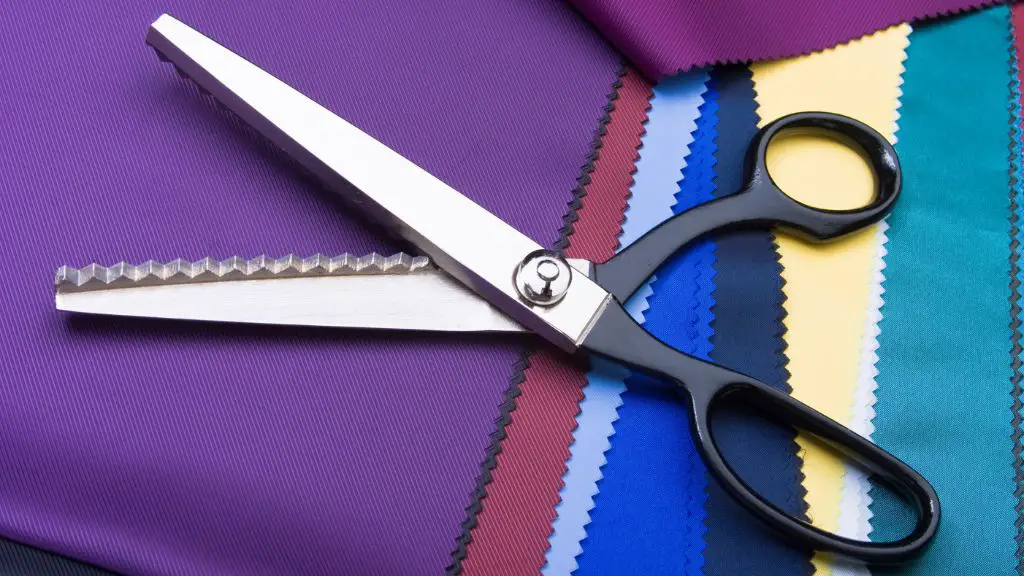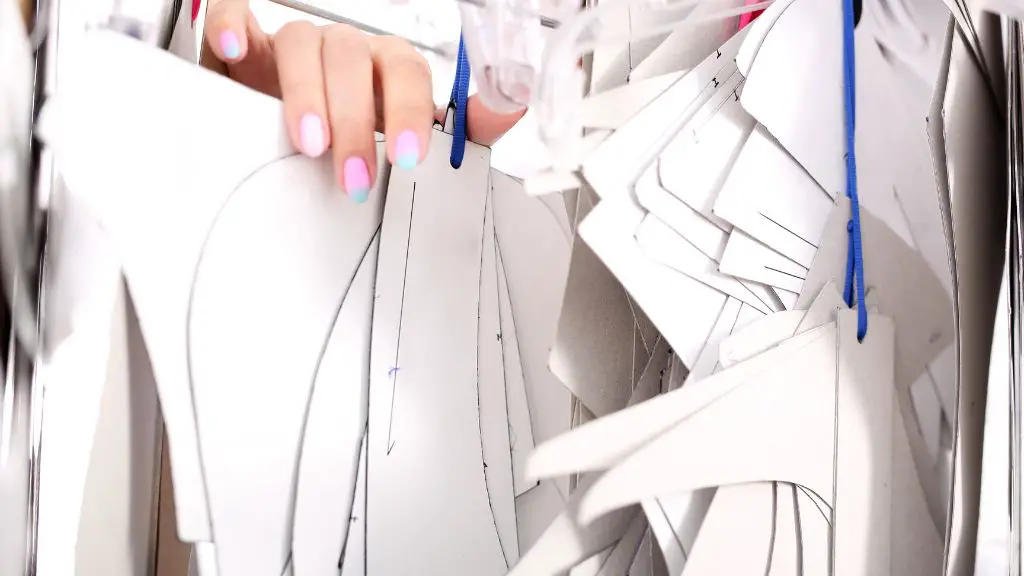There are a lot of different ways to sew and a lot of different tools that you can use. You might be wondering if it is better to sew by hand or machine.
There is no definitive answer to this question as it depends on the project you are working on and your personal preferences. Sewing by hand can be more relaxing and can give you more control over the final product, while sewing by machine is generally faster and can be more precise.
There are pros and cons to both sewing by hand and machine. In this blog post, we will discuss the pros and cons of both methods and help you decide which is best for you.
The Benefits of Sewing by Hand
Sewing by hand is a lost art. In a world of fast fashion and mass-produced clothing, sewing by hand is a beautiful way to slow down and connect with your clothes in a more personal way.
There are many benefits to sewing by hand, including:
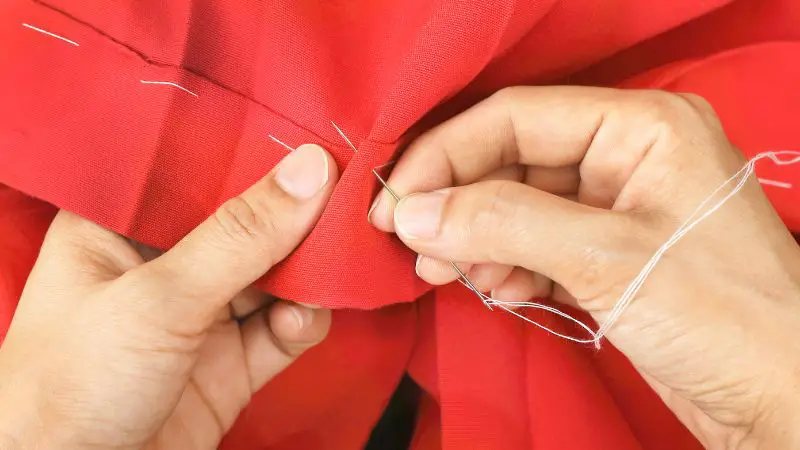
1. Sewing by hand is therapeutic.
The act of sewing is calming and can help to relieve stress. Sewing is a meditative process that allows you to focus on the task at hand and forget about the stresses of daily life.
2. Sewing by hand strengthens your fine motor skills.
Sewing requires a lot of dexterity and fine motor skills. The more you sew, the stronger and more coordinated your hands will become.
3. Sewing by hand helps you to create unique and personal clothing.
When you sew by hand, you can choose your own fabrics, patterns, and designs. This allows you to create clothing that is truly unique and personal to you.
4. Sewing by hand is a sustainable way to shop for clothing.
When you sew your own clothes, you are not contributing to the fast fashion industry. Sewing your own clothes allows you to shop sustainably and slow down the consumption of new clothing.
5. Sewing by hand is a great way to bond with friends and family.
Sewing is a social activity that can be enjoyed with friends and family. Sewing together is a great way to bond and create lasting memories.
Whether you are a beginner or a seasoned sewer, sewing by hand is a great way to slow down, be creative, and connect with your clothing in a more personal way.
The Drawbacks of Sewing by Hand
Sewing by hand is a process that has been used for centuries. It is a very common method of stitching fabric together, and is still used today by many people. However, there are some drawbacks to sewing by hand that you should be aware of before you start.
The first drawback of sewing by hand is that it is very time consuming. If you are working on a large project, it can take hours to sew all the pieces together. Additionally, sewing by hand is much slower than sewing with a machine.
The second drawback of sewing by hand is that it can be very difficult to achieve a precise and even stitching. If you are not careful, your stitches may be uneven and can cause the fabric to pucker.
The third drawback of sewing by hand is that it can be quite tiring. Sewing for long periods of time can be very strenuous on your hands and wrists. If you are not used to sewing by hand, you may find that your hands start to ache after a while.
Despite these drawbacks, sewing by hand is still a popular method of stitching fabric together. If you are patient and take your time, you can produce beautiful results.
Additionally, there are many different techniques that you can use to make your sewing by hand more efficient. With a little practice, you can become a proficient hand sewer in no time.
The Benefits of Sewing by Machine
Sewing by machine is a skill that is slowly dying out. In a fast-paced, disposable world, fewer and fewer people are taking the time to learn this important life skill. But sewing by machine has so many benefits! Here are just a few of the reasons why you should learn to sew by machine:
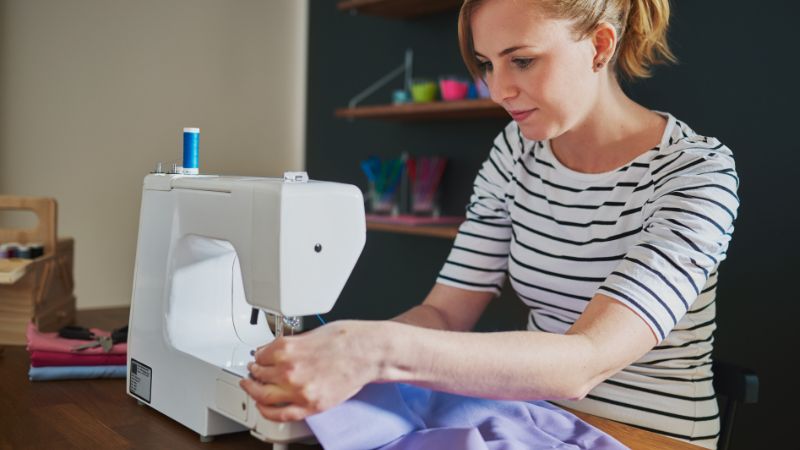
1. Sewing by machine is faster
If you need to sew a quick repair or make a small alteration, sewing by machine is much faster than hand sewing.
2. Sewing by machine is stronger
When you sew by machine, your stitches are stronger and more durable than if you sewed by hand. This is especially important if you are sewing something that will be under a lot of stress, like a pair of pants or a heavy curtain.
3. Sewing by machine is more precise
If you are sewing a complex project, sewing by machine will allow you to be much more precise than if you sewed by hand. This is because you can control the speed of the needle and the tension of the thread, which is difficult to do by hand.
4. Sewing by machine is more versatile
Sewing by machine opens up a whole world of possibilities that you can’t explore if you only sew by hand. With a machine, you can add embellishments, like ruffles or sequins, that would be difficult or impossible to add by hand. You can also sew different types of fabrics, like denim or leather, that you wouldn’t be able to sew by hand.
5. Sewing by machine is less expensive
If you are just starting out, sewing by machine is less expensive than sewing by hand. This is because you can buy a good quality sewing machine for less than $100. You can also find good quality sewing machines at yard sales or thrift stores.
So, there you have it! These are just a few of the many benefits of sewing by machine. If you have been thinking about learning to sew, or if you are already a sewist and want to improve your skills, sewing by machine is a great way to go!
The Drawbacks of Sewing by Machine
Many people think that sewing by machine is quicker and easier than sewing by hand, but there are some drawbacks to sewing by machine.
The first drawback is that sewing by machine can be very loud. If you are sewing in a room where people are trying to sleep or concentrate, the noise can be very disruptive.
The second drawback is that sewing by machine can be very messy. Thread and fabric scraps can quickly build up on your sewing machine, and if you’re not careful, they can end up all over your floor.
The third drawback is that sewing by machine can be very tiring. If you are sewing for long periods of time, your arms and hands can start to feel very tired.
The fourth drawback is that sewing by machine can be very repetitive. If you are sewing the same thing over and over again, you can start to feel like a robot.
The fifth and final drawback is that sewing by machine can be very expensive. If you need to buy a new sewing machine, it can cost hundreds of dollars.
So, while sewing by machine has some advantages, there are also some significant disadvantages that you should be aware of.
What to Consider When Choosing Between Hand Sewing and Machine Sewing
When it comes to sewing, there are two main methods: hand sewing and machine sewing. Both have their own advantages and disadvantages, so it’s important to choose the right method for your project. Here are some things to consider when making your decision:
1. The type of fabric you’re using.
If you’re working with a delicate fabric, hand sewing may be the better option. It’s also a good choice for intricate details or small projects.
2. The amount of time you have.
Machine sewing is much faster than hand sewing, so it’s a good choice if you’re short on time. It’s also a good option for large projects.
3. Your level of experience.
If you’re a beginner, you may want to start with machine sewing. It’s easier to get the hang of and there’s less room for error.
4. The look you’re going for.
If you want a more polished look, machine sewing is the way to go. Hand sewing can give your project a more rustic or homemade feel.
5. Your budget.
Machine sewing requires a sewing machine, which can be a significant investment. If you’re on a budget, hand sewing may be the better option.
No matter which method you choose, the most important thing is to have fun and enjoy the process.
Tips for Sewing by Hand
Sewing is a great way to show your creative side. You can use it to create unique clothing, accessories, and home decor. Sewing by hand is a great way to get started with sewing. It’s also a good option if you don’t have access to a sewing machine. Here are some tips for sewing by hand:
Choose the right needle:
There are different types of needles for different types of fabrics. Choose a needle that is appropriate for the fabric you are sewing.
Choose the right thread:
Again, there are different types of threads for different types of fabrics. Choose a thread that is appropriate for the fabric you are sewing.
Cut the fabric correctly:
To avoid fraying, use sharp scissors to cut the fabric. Cut the fabric in the same direction as the grain.
Prepare the fabric:
Some fabrics, like wool, need to be prewashed before sewing. This will prevent the fabric from shrinking after you’ve sewn it.
Mark the fabric:
Use chalk or a fabric marker to mark where you need to sew. This will help you keep track of your stitching.
Thread the needle:
Thread the needle with the thread of your choice. Make sure the thread is long enough to go through the fabric.
Start sewing:
To start sewing, make a small knot at the end of the thread. Push the needle through the fabric and pull the thread through. Continue this until you reach the end of the fabric.
Finish sewing:
To finish sewing, make a small knot at the end of the thread. Cut the thread, leaving a small tail.
These are just a few tips for sewing by hand. With a little practice, you’ll be a pro in no time!
Tips for Sewing by Machine
Sewing is a process of joining two pieces of fabric together using a needle and thread. Sewing by machine is a faster and more efficient way to sew than by hand. There are a few things to keep in mind when sewing by machine:
Choose the right sewing machine:
There are a variety of sewing machines on the market, and it is important to choose one that is right for your needs. If you are a beginner, it is advisable to purchase a simple machine that is easy to use.
Read the manual:
It is important to read the manual that comes with your sewing machine. This will help you understand how to use the machine and avoid any potential problems.
Choose the right thread and needle:
There are different types of thread and needles available, and it is important to choose the right ones for your project. If you are unsure, consult a sewing expert.
Prepare your fabric:
Before sewing, it is important to prepare your fabric. This includes pre-washing the fabric and ironing it to remove any wrinkles.
Mark your fabric:
When cutting your fabric, it is important to mark it so that you know where to sew. This will help you avoid any mistakes.
Sew slowly:
When sewing, it is important to sew slowly and carefully. This will help you avoid making any mistakes.
Finish your seams:
When you have finished sewing, it is important to finish your seams. This will help to prevent the fabric from unraveling.
Test your machine:
Before you start sewing, it is a good idea to test your machine. This will help you ensure that it is working properly.
Sewing by machine is a great way to save time and be more efficient. By following these tips, you can ensure that you have a successful sewing experience.
Hand Sewing vs. Machine Sewing
There are many differences between hand sewing and machine sewing. Here are some of the most important ones:
1. Speed
The biggest difference between hand sewing and machine sewing is the speed. Machine sewing is much faster than hand sewing.
2. Precision
Another difference is precision. Machine sewing is more precise than hand sewing. This is because the machine can sew in a straight line and can sew perfect stitches.
3. Strength
Machine sewing is also stronger than hand sewing. This is because the machine can sew through multiple layers of fabric and can create a stronger stitch.
4. Cost
Machine sewing is more expensive than hand sewing. This is because you need to buy a sewing machine and the cost of maintenance is also higher.
5. Portability
Machine sewing is not as portable as hand sewing. This is because you need to have an electrical outlet to use a machine.
6. Experience
Machine sewing requires more experience than hand sewing. This is because you need to know how to use the machine and how to sew in a straight line.
7. Types of fabrics
You can sew any type of fabric with a machine, but you may not be able to sew all types of fabrics by hand.
8. Uses
Machine sewing is mainly used for clothing and other items that need to be sewn in a straight line. Hand sewing is mainly used for crafts and repairs.
Conclusion
While there are benefits to both sewing by hand and sewing by machine, it ultimately comes down to personal preference. Some people find that they can sew faster and more accurately by machine, while others enjoy the slower pace and greater control that comes with sewing by hand. Ultimately, the best way to sew is the way that you enjoy the most and that produces the best results for you.
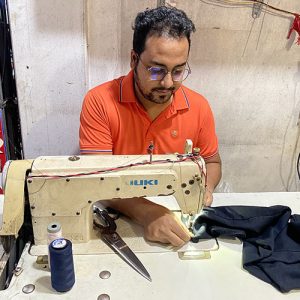
I love to sew and write! I have been doing both for many years and enjoy sharing my passion with others. I have written for both online and offline publications including Amazon and Medium, and I enjoy sewing clothes, quilts, and other items.
My writing style is engaging and lively, and I have a knack for delivering complex information in a way that is easy for everyone to follow.
